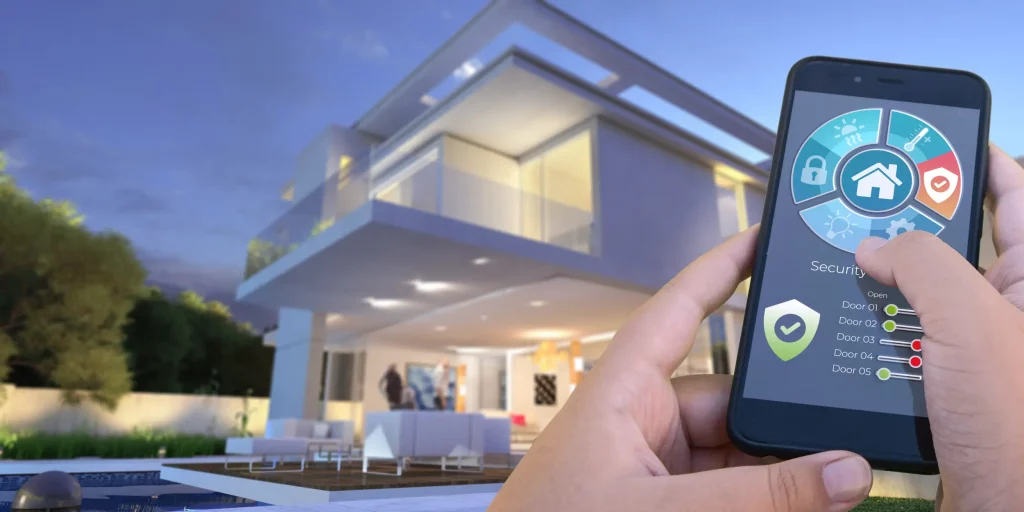In recent years, the buzz surrounding smart home technology has transitioned from futuristic concepts to tangible, life-changing innovations. Smart homes are now accessible, practical, and integrated into daily life, offering energy efficiency, security, and convenience. But how exactly are these devices transforming our homes and why should you consider investing in them? Let’s explore the emerging trends and technologies that make modern living smarter, safer, and more sustainable.

The Rise of AI-Driven Smart Home Systems
One of the most exciting developments in smart home technology is the integration of artificial intelligence (AI). With AI, devices can learn from your behavior, anticipate your needs, and respond accordingly—making your home more intuitive than ever before. Systems such as Amazon Alexa and Google Assistant are at the forefront, offering voice-controlled convenience that extends beyond simple queries and commands.
AI-driven smart homes can now manage everything from lighting to heating with a single touch or voice command. These systems analyze patterns in your daily routines and adjust your home’s environment to enhance comfort. For instance, a smart thermostat like Nest adapts to your schedule, ensuring your home is at the perfect temperature when you arrive without wasting energy when you’re away.
Smart Security: Safety at Your Fingertips
One of the most popular and essential categories of smart home technology is home security. With the rise of IoT (Internet of Things), smart security systems are more affordable and accessible than ever. Modern cameras, doorbells, and motion detectors provide remote, real-time monitoring, ensuring homeowners’ security and peace of mind anytime, anywhere.
Smart doorbells like Ring not only let you see who’s at your door in real-time but also allow for two-way communication, even when you’re miles away. Advanced security cameras can now differentiate between a person, pet, or vehicle, reducing false alarms and enhancing the overall experience. These systems often come with cloud storage options, ensuring that footage is safely backed up, and are equipped with features like facial recognition to provide an added layer of protection.
Moreover, many security solutions can be paired with emergency response teams, enabling quick action in case of a break-in or any other threat.
Energy Efficiency and Sustainability with Smart Home Tech
As sustainability becomes an increasing priority for homeowners, smart technology is making it easier to manage energy use and reduce environmental impact. Smart thermostats, smart lighting, and smart appliances offer advanced control over energy consumption. These devices not only optimize energy use, helping to reduce bills but also support eco-friendly living by adjusting settings based on your habits or external weather conditions.
For example, Philips Hue smart bulbs offer a spectrum of colors and brightness levels that can be adjusted remotely to match your mood, while also being energy-efficient. Similarly, smart washing machines like LG ThinQ use AI to determine the optimal cycle based on the load, saving water and energy without compromising on cleaning performance.
Moreover, smart irrigation systems can track weather conditions and soil moisture levels, adjusting watering schedules to ensure that lawns and gardens are maintained efficiently. These devices help homeowners save water, which is particularly beneficial in regions facing drought or water restrictions.
Smart Kitchens: The Future of Cooking
The kitchen is one of the most promising areas for smart home innovation. Smart appliances such as refrigerators, ovens, and coffee makers are making cooking and food storage easier and more efficient. For instance, smart fridges like Samsung’s Family Hub offer features like food expiration tracking, grocery lists, and even remote temperature control.
Cooking has also been simplified with the advent of smart ovens that can be controlled via apps, offering preset cooking programs and allowing users to monitor progress from a distance. Smart coffee makers, such as the Nespresso Expert, allow you to schedule your morning coffee to be ready when you wake up or even adjust settings remotely for the perfect brew.
Health and Wellness Through Smart Homes
Another emerging trend in smart home technology is its application in promoting health and wellness. From smart air purifiers that improve indoor air quality to sleep trackers that help optimize your rest, these devices help improve overall well-being. For example, devices like the Dyson Pure Hot+Cool purify the air, making your home environment healthier, while Fitbit or Oura Ring tracks your sleep patterns to provide insights on how to get better rest.
Moreover, smart mirrors in bathrooms are helping individuals monitor their health by providing real-time feedback on skin conditions, body temperature, and even heart rate. These devices take wellness monitoring to the next level by seamlessly integrating technology into our daily routines.
The Future of Smart Home Integration: A Unified Experience
The future of smart homes lies in the integration of multiple devices into a cohesive, user-friendly ecosystem. Rather than having isolated gadgets that only serve individual purposes, the goal is to create a seamless experience where everything works together. For example, your smart thermostat might work with your smart lights to adjust the brightness based on the time of day, while your smart security system can notify you if there’s unusual activity when you’re not home.
The trend towards greater interoperability is being driven by platforms like Apple HomeKit, Amazon Alexa, and Google Assistant, which allow users to control a wide range of devices using one interface. This makes managing a smart home more straightforward and allows for an interconnected, efficient living experience.
Conclusion
Smart home technology is evolving rapidly, with advancements in AI, sustainability, and security that make our daily lives easier, safer, and more energy-efficient. By investing in these innovative technologies, homeowners are not only improving their quality of life but also contributing to a more sustainable and connected future. Whether it’s adjusting the lighting with a voice command, ensuring your home is secure from anywhere in the world, or reducing your environmental impact, the possibilities are endless.
As these devices become more affordable and accessible, there’s never been a better time to embrace the future of home living. The key to a simpler, more efficient life lies in the smart home technologies that will continue to transform how we live, work, and play.
References
- Philips Hue. (n.d.). Smart lighting. Available at: https://www.philips-hue.com
(Accessed: 19 August 2025). - Thomas, S., & Smith, R. (2023). Exploring the integration of AI in smart homes: Revolutionizing daily living. Tech Review Journal, Available at: https://www.techreviewjournal.com
(Accessed: 19 August 2025). - Dyson. (2024). Pure Hot+Cool™: Advanced air purification. Available at: https://www.dyson.com (Accessed: 19 August 2025).









